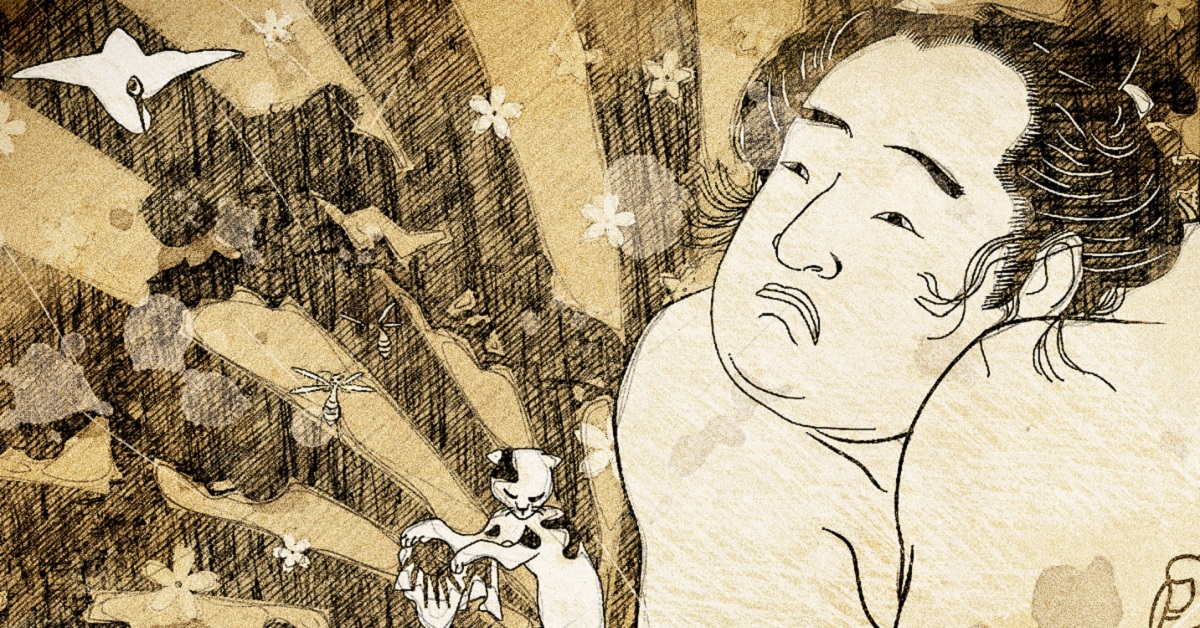Sumo, Japan’s oldest traditional sport, traces its origins back to ancient mythology. It is not merely a physical contest, but a ritual deeply embedded in Shinto beliefs and Japanese history. Understanding its origins reveals the spiritual and cultural foundations of sumo that still persist in modern times
Sumo’s Origins in Myth
The earliest recorded references to sumo appear in the Kojiki and Nihon Shoki, two of Japan’s oldest texts. In them, the gods Takemikazuchi and Takeminakata engage in a test of strength during the mythical transfer of land (kuniyuzuri). This contest was not merely a fight, but a sacred act to determine divine will, which laid the foundation for what would become sumo.
This battle symbolized the legitimacy of rule through strength, and its ritual nature has been carried into modern sumo practices such as salt purification and shiko (foot-stomping).
| Sumo in Myth | Details |
|---|---|
| Divine Contest | Takemikazuchi vs. Takeminakata |
| Symbolic of Rule | Strength determined national control |
| Ritual Significance | Modern dohyō practices reflect Shinto origins |
The Tale of Sukune and Kehaya: Early Martial Culture
The next pivotal moment in sumo’s history comes from the legendary match between Nominosukune and Taima no Kehaya. This match, held in front of Emperor Suinin, is the earliest recorded sumo bout, and it marks the beginning of sumo as a competitive discipline.
Nominosukune defeated Kehaya and was later appointed to serve the emperor, establishing sumo as both a ritual and a form of martial art based on technique and respect.
| Meaning of Sukune vs. Kehaya | Description |
|---|---|
| Earliest Recorded Match | Held before Emperor Suinin |
| Victor’s Reward | Nominosukune entered imperial service |
| Birth of Technique | Early emphasis on skill and form |
From Court Ritual to Warrior Practice
During the Nara and Heian periods, sumo became a formal state event, with the imperial court hosting the Sumai no sechie every July. In this ritual, wrestlers from across the country displayed their skills before the emperor, combining ceremony with symbolism of imperial power.
As the samurai class rose, sumo evolved into a method of martial training. Used to develop physical strength and readiness for close combat, sumo became both a mental and physical exercise, deeply rooted in the values of the warrior class.
| Sumo’s Dual Function | Court Society | Warrior Society |
|---|---|---|
| Purpose | Ceremonial display | Physical training |
| Format | Ritual contest | Practical drills |
| Outcome | Imperial prestige | Combat readiness |
Sumo in the Edo Period: Popular Entertainment
With the arrival of the Edo period, sumo shifted away from elite circles and became a major form of popular entertainment. Especially through dedicatory matches at temples and shrines, sumo grew into large-scale events, eventually becoming a commercial spectacle with entrance fees and professional wrestlers.
The foundations of modern sumo were also laid during this period.
| Edo-Era Sumo Elements | Description |
|---|---|
| Dedication Matches | Ritual offerings at shrines |
| Commercialization | Spectator-based revenue model |
| Ranking System | Official evaluation of rikishi |
| Dohyō Establishment | Standardized competition area |
Modernization in the Meiji Era: National Recognition
In the Meiji era, Japan rapidly modernized. Yet, sumo retained its traditional essence while becoming institutionalized. In 1884, the Great Japan Sumo Association was founded, beginning the era of nationally unified management. Sumo became more than just sport—it was recognized as a national cultural treasure.
By the Showa period, radio and television had made sumo a household presence. The creation of the Ryōgoku Kokugikan cemented its role as Japan’s national sport.
| Milestones Since Meiji | Details |
|---|---|
| Association Founded | Unified administration of sumo |
| National Arena | Ryōgoku Kokugikan built in Tokyo |
| Media Expansion | Radio and TV boosted nationwide appeal |
Ritual and Spiritual Culture in Sumo
Even today, sumo is deeply infused with ritual elements from Shinto practices. Salt purification, shiko stomping, and the precise spacing before the initial charge are not random—each action holds spiritual meaning. The dohyō is considered sacred ground.
Hierarchical relationships within sumo stables, as well as the strict observance of respect and decorum, reflect traditional Japanese values that go far beyond the surface of competition.
| Sumo Ritual Practices | Significance |
|---|---|
| Salt Throwing | Purification of the ring |
| Shiko Stomping | Subduing evil spirits |
| Open Palms | Symbol of unarmed purity |
| Bowing | Respect for opponents and the divine |
Conclusion
From its mythological beginnings to its current status as Japan’s national sport, sumo has mirrored the evolution of Japanese culture. It has served as a ceremony, a training method, a public spectacle, and a cultural monument.
Sumo is not just a test of strength—it’s a spiritual and aesthetic discipline that resonates with generations. Through sumo, we glimpse the core of Japan’s identity, and that is what makes it not only a sport, but a living symbol of national pride.





コメント